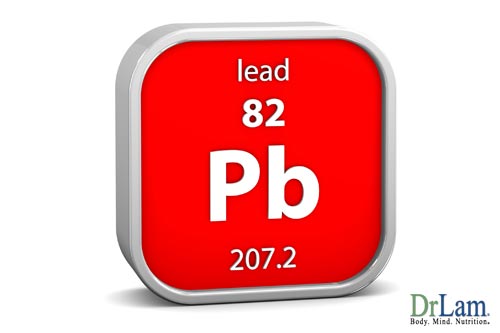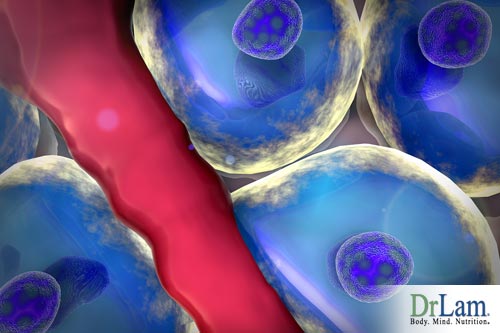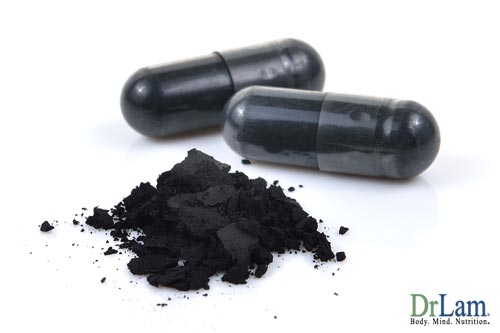
 Many people have heard about the dangers of lead based paint and how lead poisoning can cause developmental delays in children. Lead is dangerous for adults as well, and isn’t only present in paints. It can come into the home from lead water pipes, food grown in lead-containing soil, and supplements made or grown with lead. Once in the body, it can cause heavy metal poisoning, although there are ways to reduce exposure and help remove lead from the system. This article explores the uses of lead, its toxicity, its effects on the body, symptoms of lead poisoning, its role in adrenal fatigue, environmental sources, and ways to reduce exposure and remove lead from the body.
Many people have heard about the dangers of lead based paint and how lead poisoning can cause developmental delays in children. Lead is dangerous for adults as well, and isn’t only present in paints. It can come into the home from lead water pipes, food grown in lead-containing soil, and supplements made or grown with lead. Once in the body, it can cause heavy metal poisoning, although there are ways to reduce exposure and help remove lead from the system. This article explores the uses of lead, its toxicity, its effects on the body, symptoms of lead poisoning, its role in adrenal fatigue, environmental sources, and ways to reduce exposure and remove lead from the body.
Until the mid-1970s, lead was widely used as a paint additive because of its durability and resistance to moisture. Lead was also added to gasoline to boost octane ratings, reduce engine knocking, and to reduce wear and tear on the motor valves. The Environmental Protection Agency (EPA) began phasing out leaded gasoline in the 1970s, but it wasn’t banned from all gasoline used in on-road vehicles until 1995.
Lead is still used in a variety of applications today, including lead acid batteries, solder, electrical and electronic components, x-ray shielding, industrial soundproofing, ceramics, crystal glass, ammunition, plumbing, and plastic. Lead can also still be found in some items imported from other countries, including cosmetics, folk medicines, crayons, and in the paint on imported goods.
Welders, construction workers, plumbers, and those who use leaded glazes in their work are among those with the highest exposure to heavy metal poisoning. These individuals may also bring lead residue home on their clothing, contaminating vehicles and homes.
At home, the biggest exposure risk is from homes built before 1978. These houses may still contain lead-based paint. If you live in an area with lead in the soil, this can also be an issue. Other sources of possible lead exposure in the home include decorative glazes on dishes, lead plumbing, and some supplements.
Lead has no beneficial function in the human body, but it does have many harmful effects. Lead exposure in children can cause developmental delays and learning disabilities. Very young children are more susceptible to the effects of lead exposure and heavy metal poisoning due to the immaturity of their central nervous systems. However, anyone exposed to lead can experience a whole variety of ill effects.
In pregnant women, lead exposure can lead to miscarriage, premature birth, and children with developmental delays and slowed growth. In young children, lead heavy metal poisoning can damage the brain and nervous system, lead to hyperactivity and other behavioral problems, and can cause hearing problems, headaches, anemia, and seizures. In severe cases, lead heavy metal poisoning exposure in children can even lead to coma and death. There is also evidence suggesting that lead exposure may be a major contributor to ADD and ADHD in children. Fluoridated water, which is found in many municipalities, has been shown to increase absorption of lead, especially in children.
In adults, lead heavy metal poisoning exposure can damage vision and hearing, cause infertility in both males and females, damage the nervous system, cause problems in memory and concentration, inhibit muscle coordination, and cause muscle and joint pain.
 Today, governmental agencies have set the ‘safe’ levels of lead in the blood at ten micrograms per deciliter, but studies show that lead levels as low as two micrograms per deciliter are associated with increased risk of heart attacks, strokes, and death, even controlling for other cardiovascular risk factors.
Today, governmental agencies have set the ‘safe’ levels of lead in the blood at ten micrograms per deciliter, but studies show that lead levels as low as two micrograms per deciliter are associated with increased risk of heart attacks, strokes, and death, even controlling for other cardiovascular risk factors.
Other studies, including one published in the Journal of the American Medical Association, suggest that high levels of lead in the bloodstream can lead to high blood pressure in postmenopausal women. Another study in the New England Journal of Medicine found that high lead levels can contribute to kidney failure, although chelation therapy can protect remaining kidney function.
Symptoms of lead poisoning are often vague, can be easily mislabeled, and may not even show up until accumulation has reached dangerous levels. Symptoms of lead toxicity include:
The specific set of symptoms depend on the individual and the duration and level of exposure and the specific type of lead to which one is exposed. In cases of chronic, low level heavy metal poisoning exposure, symptoms may develop over a course of weeks or even months, while symptoms from high level heavy metal poisoning exposure may come on more suddenly. Organic lead is more soluble than inorganic lead, making it easier to absorb and potentially more toxic. Symptoms may also manifest more quickly after exposure to organic lead than inorganic lead.
How Lead Affects the NeuroEndoMetabolic System
Scientists have long known that the central nervous system and the endocrine system work together closely to manage the body’s responses to stress through the hypothalamic-pituitary-adrenal (HPA) hormonal axis. These organs, combined with the brain, respond to stress by releasing hormones and neurotransmitters designed to help the body react to stressful situations. This response is commonly referred to as fight-or-flight. What scientists are now finding is that the metabolism plays a major role in these functions.
The role of metabolism in the stress response starts with the chemical reactions that take place in the cells to convert food into energy. However, role of the metabolism goes beyond simple energy production to controlling the inflammatory response and detoxification.
When the metabolism is healthy, it is able to protect against oxidative damage from stress and reduce toxic load, protecting the cells. When the metabolism does not function optimally, it is unable to maintain balance in the microbiome. In turn, the cells become congested, the body is unable to excrete toxins efficiently, nutrient delivery to the cells is hampered, and recovery from trauma is slowed.
 Essentially, the metabolic system is critical to the function of the HPA axis. The necessary chemical reactions cannot be carried out without the help of metabolic processes, and we are left unable to respond appropriately to stress.
Essentially, the metabolic system is critical to the function of the HPA axis. The necessary chemical reactions cannot be carried out without the help of metabolic processes, and we are left unable to respond appropriately to stress.
The conventional neuroendocrine model of stress places emphasis on the adrenal glands as the primary stress response organs. This is adequate for low levels of occasional stress, such as is seen in the early stages of adrenal fatigue. As stress levels increase and adrenal fatigue progresses, however, it is vital to look at the stress response as involving a full spectrum of systems, pathways, organs, and chemical reactions all functioning in cooperation. This model gives greater insight into how the body responds throughout the stages of adrenal fatigue.
The NeuroEndoMetabolic (NEM) Stress Response system is a more functional perspective on how the body responds to stress, describing the progressive nature of adrenal fatigue and providing a more holistic way of evaluating stress. By factoring the metabolism into the equation, it is easy to look at both the localized and the system-wide responses to stress. This functional model of stress considers the body as a whole entity with systems that work together and cannot be separated.
The metabolic component of the stress response is so subtle that it has been overlooked by scientists for decades. It has become clear that there is still much that we do not know about the metabolism and its role in the stress response.
The metabolism and its role in stress has been overlooked for so long simply because it is so well regulated that metabolic malfunctions are uncommon, and symptoms of metabolic issues, such as sugar cravings, often seem innocuous and easily managed. Other symptoms, such as obesity, are seen as the result of unhealthy lifestyle choices. Ignoring that stress is a significant factor in these issues will only lead to further problems, including hypersensitivity, crashes, and other symptoms. By the time these symptoms become noticeable, the neuroendocrine system has been compromised. By this point, it is not at all uncommon for sufferers to also have symptoms such as fatigue, reactive hypoglycemia, drops in blood pressure, lightheadedness, anxiety attacks, and gastric disturbances. These symptoms indicate the body has entered a catabolic state, when the body starts breaking down its own tissue.
By the time sufferers get to this point, they are virtually homebound, barely able to get out of bed. Most people are able to get help before they become this debilitated, but those that do get to this point are unable to function normally, requiring assistance with the most basic activities of daily living. Many sufferers find themselves going to one doctor after another, looking for help. They are often seen for a variety of different illnesses, with a variety of different medications, all proving unhelpful, and ultimately making the problem worse.
All of these symptoms are the body’s way of asking to be left alone to heal. Severe metabolic dysfunction is the final cry of a body that has been overcome by stress. However, these signs and symptoms are only clear in hindsight, as they begin quite subtly, making them easy to ignore, exacerbating the problem.
Gaining an understanding of the importance of the metabolism in the stress response and recognizing the early symptoms is important because it allows us to recognize what is happening, so the problem can be corrected before it becomes debilitating.
 Accumulated toxins and extreme or prolonged stress raises oxidative stress and inhibits normal cellular electron flow, leading to cell death and debris. Avoiding accumulation of toxins depends on efficient detoxification of metabolites and toxins. The liver, immune system, and extracellular matrix make up the primary system of detoxification, keeping the body’s systems clean. The liver in particular is the primary organ responsible for filtering and removing toxins and, as such, must be kept functioning optimally. The extracellular matrix, immune system, kidneys, and lymphatic system all support the liver in keeping the body clear of pollution.
Accumulated toxins and extreme or prolonged stress raises oxidative stress and inhibits normal cellular electron flow, leading to cell death and debris. Avoiding accumulation of toxins depends on efficient detoxification of metabolites and toxins. The liver, immune system, and extracellular matrix make up the primary system of detoxification, keeping the body’s systems clean. The liver in particular is the primary organ responsible for filtering and removing toxins and, as such, must be kept functioning optimally. The extracellular matrix, immune system, kidneys, and lymphatic system all support the liver in keeping the body clear of pollution.
Stress causes oxidative damage to the cells, and a heavy load of metabolites must be continuously processed by the liver in order to prevent an accumulation of toxins in the body. Everyday toxins from medications, processed foods, caffeine, alcohol, and hydrogenated fats accumulate in and around the cells, preventing them from taking up nutrients and eliminating waste effectively. The toxins can also penetrate the cell walls, damaging mitochondria. Cell damage is inevitable when the body is full of toxicity.
Optimizing the cells both inside and out is critical to removing toxins. Lead and other toxic metals found in the water, food, and air all cause additional damage to the cells, while receptor sites are damaged with the use of drugs, whether prescription, over the counter, or recreational. The ability of the cells to send signals along with the structural integrity of the cell walls can become congested, inhibiting cellular respiration and energy production. As toxins continue to accumulate, the immune system is further degraded, leading to premature cell death, and increasing cellular debris, which can aggravate congestion, leading to a vicious cycle that can be difficult to break.
It’s no wonder, then, that as the burden of toxins grows, more symptoms emerge, and symptoms become more intense, including hypersensitivity to stress, intolerance of medications and supplements, and sensitivities to chemicals.
 Lead, along with several other toxic metals, can accumulate in the blood and tissue, causing heavy metal poisoning. As many as a quarter of all Americans have some degree of toxic metal buildup in their systems, most commonly lead. Hundreds of thousands of tons of lead are released into the environment from industrial processes, pesticide sprays, cigarette smoke, and other sources to then settle on soil, groundwater, and food crops.
Lead, along with several other toxic metals, can accumulate in the blood and tissue, causing heavy metal poisoning. As many as a quarter of all Americans have some degree of toxic metal buildup in their systems, most commonly lead. Hundreds of thousands of tons of lead are released into the environment from industrial processes, pesticide sprays, cigarette smoke, and other sources to then settle on soil, groundwater, and food crops.
Heavy metal poisoning has been found to be harmful to every system in the body, particularly the central nervous system, and has been associated with a variety of illnesses and conditions, including Alzheimer’s disease, Parkinson’s, and other serious neurological disorders. Lead tends to accumulate within the cells, and levels of lead in blood serum is not a good indicator of lead levels in the blood cells, where the damage is done. For this reason, the best way to determine whether an individual has toxic levels of the metal is through thorough analysis of blood.
In otherwise healthy individuals, detoxifying lead and other heavy metals is a simple matter of using chelating agents to mobilize and bind with toxic metals so they can be easily excreted. However, mobilizing these toxic metals means releasing them into the bloodstream, which means they are temporarily recirculating through the system. Most individuals who go through chelation therapy have higher results on tests for toxic metals in the early stages of the process. In adrenal fatigue sufferers, this means that symptoms may get worse for a time or even lead to full adrenal exhaustion, leaving the sufferer unable to handle the sudden flood of toxins, unless the NEM system is strengthened and supported to handle the onslaught.
We all, as a result of living in modern times, are carrying at least some toxic heavy metals and would be healthier by getting rid of them. Those with Adrenal Fatigue Syndrome (AFS) need chelation even more than most. So how can someone suffering from adrenal fatigue avoid bringing on a severe case of adrenal burnout in the process of detoxing?
The answer lies in taking the chelation process slowly while supporting the adrenal glands and the rest of the endocrine system with good nutrition throughout. Focus on whole, minimally processed, preferably organic, foods.
Lead has a lot of qualities that make it useful in a variety of applications. While it has been banned in the U.S. for many applications, it is still in use for some, and is still widely used in many products imported from other countries. Because of this, lead can be virtually impossible to avoid completely. Lead can be ingested via contaminated food or water, inhaled, and even absorbed through the skin. Those most susceptible to lead heavy metal poisoning include small children, smokers, and those with occupational exposure.
 For the average adult, diet is the primary source of lead exposure, specifically from contaminated water and food grown in contaminated soil or in areas where environmental lead may deposit on crops. Lead can also be leached into food from containers and utensils containing lead, such as lead crystal glassware or ceramics with lead based glaze. Lead may also be intentionally used as a food additive, most notably lime-preserved century eggs, a delicacy in China.
For the average adult, diet is the primary source of lead exposure, specifically from contaminated water and food grown in contaminated soil or in areas where environmental lead may deposit on crops. Lead can also be leached into food from containers and utensils containing lead, such as lead crystal glassware or ceramics with lead based glaze. Lead may also be intentionally used as a food additive, most notably lime-preserved century eggs, a delicacy in China.
The fact is that plants are quite effective at absorbing metals, including lead, from the soil in which they are grown. Some research shows plant foods absorb as much as 7% of the lead found in the soil, though too much lead in the soil will kill the plant. Lead in the environment tends to settle on crops and on soil, staying in about the top inch of soil. Because of this, plants with deeper roots will absorb less lead. Grains are one of the biggest culprits, storing minerals from the soil in the seed and husk.
In most cases, lead contaminated water comes from lead pipes, pipe connections, and solder. With lead having been banned from use in paint and gasoline almost forty years ago, it would seem that it would have been removed from plumbing in that time as well, but it hasn’t. There have been some attempts to replace lead pipes with other materials, but in some cases, the health risks of heavy metal poisoning have actually increased.
Water from municipal treatment plants is distributed throughout the district via water mains, large pipes made of concrete or cast iron. The water gets from the water main to your home through service lines, which may be made of lead, especially if you live in an older neighborhood in the Northeast or Midwest. It’s unknown how many service lines are made of lead and how many can cause heavy metal poisoning, but it’s estimated at somewhere between 3.3 and 6.4 million. Many more service lines may have lead solder in the joints. As the pipes age, they begin to corrode and deposit particles into the water that flows through them. Your water may also carry lead from brass or bronze fixtures. Even those fixtures labeled ‘lead-free’ may contain up to 8% lead, if they were manufactured prior to 2014.
In 1991, the EPA passed the Lead and Copper Rule, which would require water companies to test customer’s homes for lead contamination in the water, and gradually replace service lines until lead levels were reduced. Water companies balked at this and lobbied until the plan was discarded. The EPA responded by amending the plan to require water companies to replace service lines as needed just to the property line, leaving property owners responsible for replacing service lines from the property line to their homes.
In the past several years, thousands of partial pipe replacements have been completed, affecting over a million people, with more replacements having been carried out during routine maintenance and emergency repairs. The problem with these partial pipe replacements is that doing so disturbs the pipes, dislodging lead particles and increasing the amount of lead in the water and the chances of someone getting heavy metal poisoning, at least for a time.  A 2010 study conducted by the Centers for Disease Control found that children living in homes where partial pipe replacements had been completed were three times more like to have elevated blood levels as those in homes that had still had lead pipes that hadn’t been replaced.
A 2010 study conducted by the Centers for Disease Control found that children living in homes where partial pipe replacements had been completed were three times more like to have elevated blood levels as those in homes that had still had lead pipes that hadn’t been replaced.
An investigation carried out by a civil and engineering professor at Virginia Tech found that some water companies have gotten around the EPA requirements by selectively testing homes in order to hide potential problems. Other companies have “gifted” the service lines to the homeowners, absolving themselves from responsibility.
You have no control over your water company, and may not even be notified if the pipes leading to your property are made of lead, or if pipe replacement is being done in your area. Well water is the most reliable way to avoid lead contaminated water, but is not an option for many.
The next best option is to use both a whole house water filter along with filters on the taps. Whole house water filters remove hundreds of contaminants, including leads and by-products of the water treatment process before the water even enters your home. However, your home could have lead in the pipes, the pipe connections, or other plumbing components. Tap filters can remove contaminants that get by the whole house filter as well as contaminants that could be in your home’s plumbing. Look for a filter certified by NSF International to remove lead.
A few other precautions can help you minimize your exposure to lead heavy metal poisoning in your water supply. Never use hot water from the tap for drinking, cooking, brushing teeth, etc. Toxic metals in the plumbing are more easily leached by hot water. Use cold water from the tap and run it for a few minutes to clear the water that has been sitting in the pipes, especially first thing in the morning or if you otherwise haven’t run any water through the tap in several hours. If you need hot water, heat it on the stove or in your coffee maker.
Another surprisingly common source of lead heavy metal poisoning comes from natural and folk remedies. Several people have become deathly ill or died in the past several years after taking remedies contaminated with lead. In most cases, the remedies were manufactured and purchased in other countries and brought back. In some cases, lead is added intentionally because it is thought to have beneficial properties, though there are no proven benefits. In other cases, the remedies are made with ingredients grown in contaminated soil or are contaminated during manufacturing.
Some of the remedies most likely to contain lead include Mexican remedies used to relieve constipation in children, some of which can contain 90% lead. Also avoid litargirio, a remedy used by Dominican immigrants to address a variety of issues, containing nearly 80% lead, and some ayurvedic remedies.
That’s not to say you should completely avoid supplements or natural medicine; some of these products have their place and can be incredibly helpful. However, it’s important to be aware that not all manufacturers follow best practices to create high quality supplements. If you take supplements or natural remedies, buy only from reputable vendors and be sure to do your research on the remedy, the vendor, and the manufacturer. Especially be wary of imported remedies, as U.S. manufacturers are strictly regulated.
 After warnings in the 1990’s about potential toxic metals in Chinese herbal remedies, the California Department of Health Services, Food and Drug branch analyzed no less than 260 Chinese herbal products sold in California stores. The U.S. Pharmacopoeia has set limits for lead in medicinal botanical products at 10 ppm. It was found that more than 90% of the Chinese products tested well below this limit, most at no more than 2-3 ppm.
After warnings in the 1990’s about potential toxic metals in Chinese herbal remedies, the California Department of Health Services, Food and Drug branch analyzed no less than 260 Chinese herbal products sold in California stores. The U.S. Pharmacopoeia has set limits for lead in medicinal botanical products at 10 ppm. It was found that more than 90% of the Chinese products tested well below this limit, most at no more than 2-3 ppm.
There are multiple reasons why herbal remedies might contain excessive levels of lead, starting with the growth medium. As we’ve mentioned, plants are highly efficient at absorbing minerals from the soil. If the herbs are grown in soil containing lead, the plant will contain lead. As the plant grows, the area where it is grown may be saturated with pesticides, fungicides, herbicides, or other chemicals that may contain lead, which will also be absorbed by the plant. If the remedy is manufactured in a facility that has lead based components, or that uses water contaminated with lead, the finished product may have high levels of the metal. Finally, as mentioned, some cultures believe lead to have curative properties, and remedies produced in these regions may have lead intentionally added. In the U.S., stringent manufacturing regulations exist to minimize the possibility of lead contamination in supplements and remedies.
While herbs and supplements are generally safer and less expensive than pharmaceutical options, they should only be used as an addition to healthy lifestyle changes and good nutrition to support good health. Without good nutrition and a healthy lifestyle, supplements can only act as a band-aid, easing symptoms but not improving health. Supplement clinics only stock supplements from manufacturers with the strictest quality standards.
 Chelation is the process of removing lead and other toxic metals from the body. The word comes from the Greek word meaning ‘claw’ because it was thought that chelating substances literally took hold of toxic metals and transported them from the body through the digestive tract. The Greeks were onto something, because there are a number of substances that effectively bind with toxic metals, making them easier to excrete. In cases of severe or acute heavy metal poisoning, chemical chelating agents such as DMSA are administered in the hospital, either intravenously or orally. Chemical chelation doesn’t only remove toxic metals from the body, it removes essential minerals, such as iron, as well. IV chelation can also cause a variety of unpleasant side effects. This type of chelation involves hospitalization, as the patient must be monitored to ensure the kidneys and liver are not being overloaded and make sure white blood cell counts are staying within the normal range. Generally, medical chelation for heavy metal poisoning is only used if lab testing shows blood levels of one or more heavy metals to be over a specified concentration, and this must be done under medical supervision.
Chelation is the process of removing lead and other toxic metals from the body. The word comes from the Greek word meaning ‘claw’ because it was thought that chelating substances literally took hold of toxic metals and transported them from the body through the digestive tract. The Greeks were onto something, because there are a number of substances that effectively bind with toxic metals, making them easier to excrete. In cases of severe or acute heavy metal poisoning, chemical chelating agents such as DMSA are administered in the hospital, either intravenously or orally. Chemical chelation doesn’t only remove toxic metals from the body, it removes essential minerals, such as iron, as well. IV chelation can also cause a variety of unpleasant side effects. This type of chelation involves hospitalization, as the patient must be monitored to ensure the kidneys and liver are not being overloaded and make sure white blood cell counts are staying within the normal range. Generally, medical chelation for heavy metal poisoning is only used if lab testing shows blood levels of one or more heavy metals to be over a specified concentration, and this must be done under medical supervision.
Fortunately, there are foods that are highly effective chelators that do not cause the side effects associated with medical chelation. Nutritional chelation works more gently, removing toxic metals more gradually than chelation with pharmaceuticals. That doesn’t mean they are any less powerful, however. In fact, some of these dietary measures have been shown to outperform chemical chelation.
Incorporating these foods into the diet does not require blood testing, prescriptions, or medical supervision. In fact, changing the diet to include chelating foods can be an effective preventive measure, particularly for those who are exposed to higher than normal levels of heavy metals, helping to remove toxic metals before they get the opportunity to accumulate. This can also be a helpful measure for those who are experiencing some of the earlier symptoms of heavy metal poisoning. Try working some of these into your daily routine for a few weeks and see if you notice a difference.
Cilantro is the pungent tasting, lacy, dark green leaf of the coriander plant. Chlorella is a single-celled freshwater algae. Together, they are one of the most powerful chelators available. The key is using them together, as cilantro is so effective that it pulls heavy metals from the tissues more rapidly than the body can excrete them, so they may be reabsorbed. Adding chlorella to cilantro can help ensure heavy metals are actually removed from the body rather than reabsorbed into the tissue. Research has shown that this combination begins removing heavy metals within two weeks, and can remove as much as 80% of accumulated heavy metals within six weeks. Both of these foods have also been shown to be excellent immune boosters with a host of other health benefits.
Amino acids are the building blocks of protein and are found in many foods, most notably in eggs, fish, and other animal products. Amino acids also help to support the liver and balance enzymes.
 Not really a food, but easy to obtain and use. Food grade activated charcoal is not the same as what you would use on the grill. Charcoal briquettes contain toxic chemicals, while food grade charcoal is made with pure, organic substances and is a known detoxifier. Activated charcoal is a fine powder that can be taken in capsule form, sprinkled over food, or stirred into a beverage.
Not really a food, but easy to obtain and use. Food grade activated charcoal is not the same as what you would use on the grill. Charcoal briquettes contain toxic chemicals, while food grade charcoal is made with pure, organic substances and is a known detoxifier. Activated charcoal is a fine powder that can be taken in capsule form, sprinkled over food, or stirred into a beverage.
Alliums, a family of vegetables that include onions, garlic, shallots, and leeks, along with cruciferous vegetables such as cabbage, cauliflower, and Brussels sprouts are some of the best dietary sources of sulfur.
There are a few things you should remember as you incorporate these into your diet. First, these foods may remove essential minerals along with toxic metals, leading to deficiency. Second, when the body is deficient in essential minerals, it may use toxic metals to fill the gap. For these reasons, it is vital to ensure you are getting enough iron, copper, and other essential trace minerals in your diet. Finally, chelation only removes metals from the body, but it cannot undo the damage that has already been done.
If this all seems overwhelming, lifestyle coaching can help you determine your greatest risk factors for lead exposure, and nutritional coaching can help you determine the best approach for removing toxic metals without making adrenal fatigue or other health issues worse or causing nutritional deficiencies. Removing lead from the body is a good concept, but those with advanced adrenal fatigue should proceed with great care to avoid retoxifcation reactions which can trigger adrenal crashes and retard adrenal recovery.
While lead can be stealthily present in food, water, and homes, it is possible to reduce lead exposure and remove lead from the body.